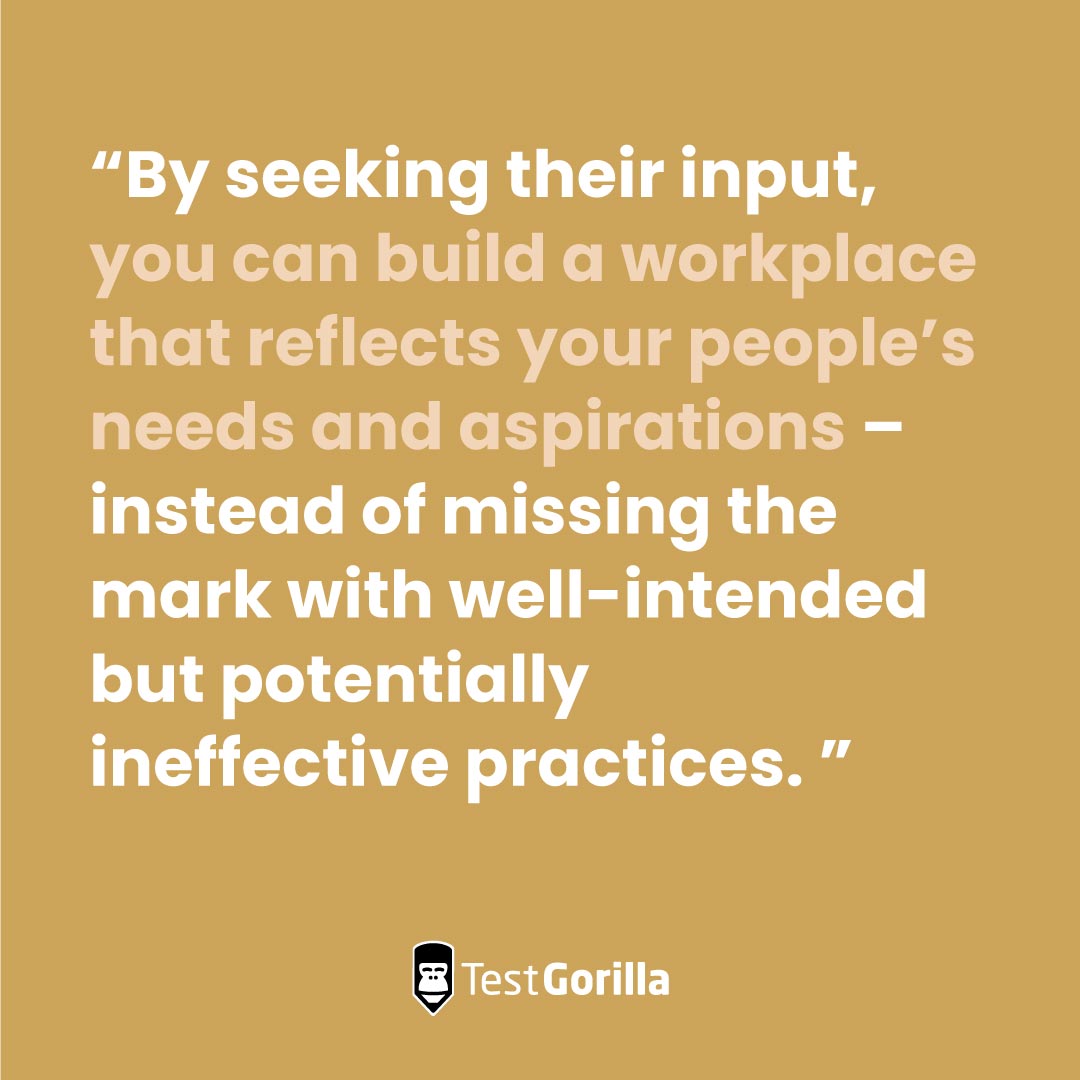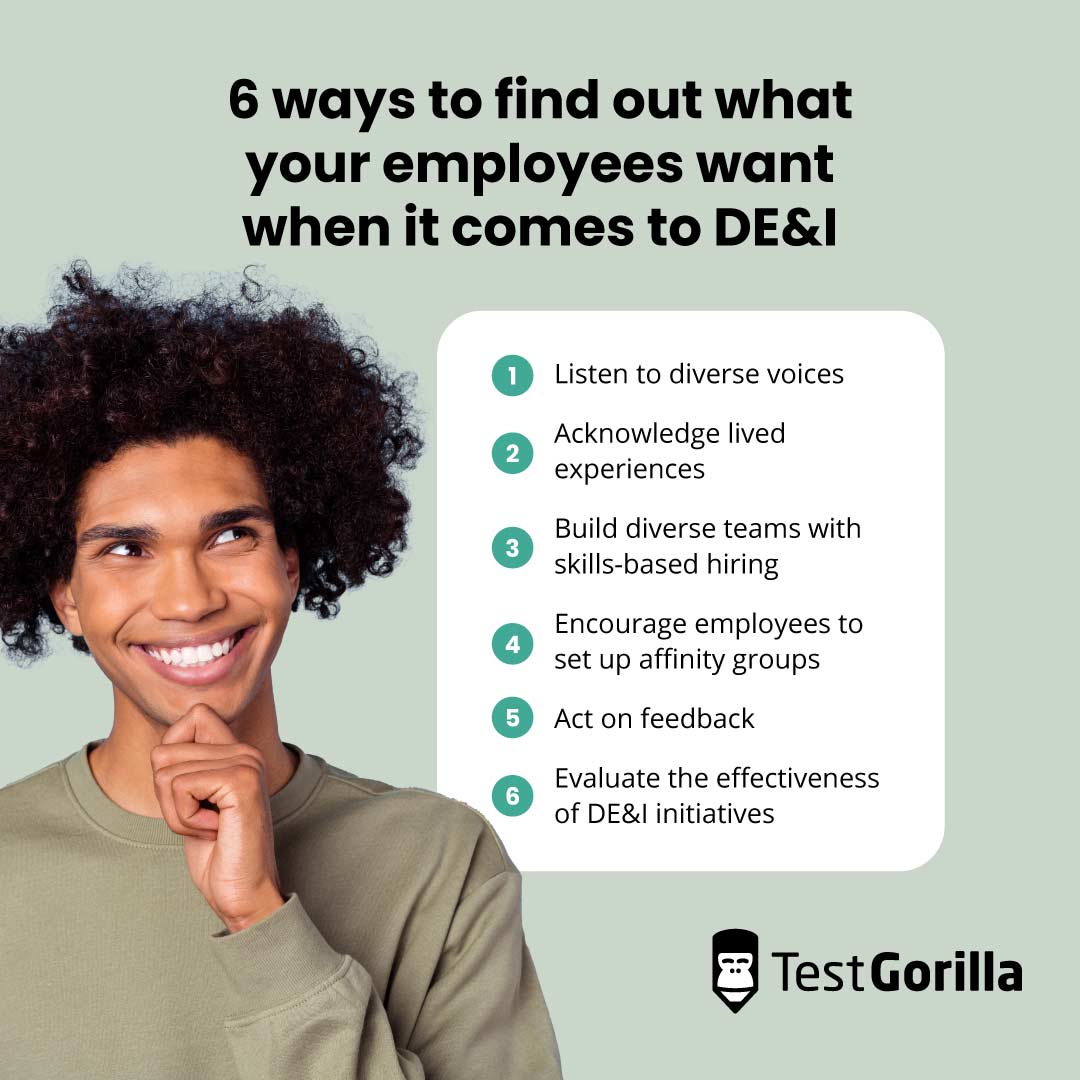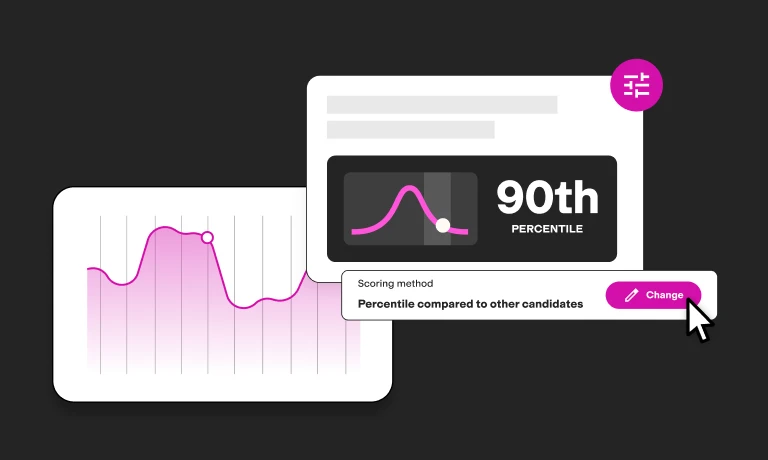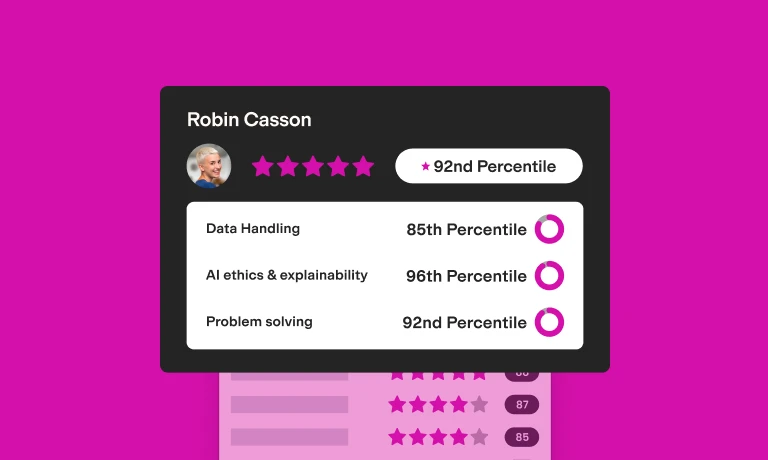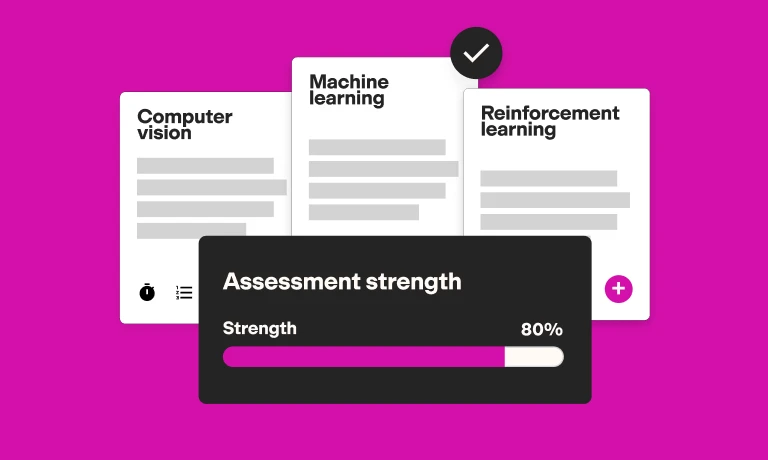6 ways employee input helps organizations build better DE&I initiatives
Diversity, equality, and inclusion (DE&I) in the workplace means treating all employees fairly, regardless of background, ethnicity, gender, or other characteristics. It’s about creating an inclusive environment where everyone feels valued and respected, no matter who they are or where they come from.
In 2022, global organizations invested around $ 9.4bn in diversity, equality, and inclusion (DE&I), a figure that’s only expected to keep growing.[1]
Despite all that investment, however, some companies neglect to consult their employees from underrepresented groups about the policies and practices that affect them.
Creating meaningful change involves actively listening to all your employees and gaining a deeper understanding of their needs and expectations.
Inviting diverse voices to share their thoughts on your DE&I efforts makes your policies more aligned with their experiences and helps you cultivate a culture of inclusivity.
By seeking their input, you can build a workplace that reflects your people’s needs and aspirations – instead of missing the mark with well-intended but potentially ineffective practices.
In this article, we’ll explore the crucial role of employee feedback in enhancing your DE&I initiatives and how recruiting from a wider talent pool can help you build a more diverse and inclusive team, which benefits your business. Plus, we’ll explain how to actually turn those conversations into actionable ideas to boost DE&I.
The problem with a top-down approach to DE&I
A diverse workforce can transform your business, making it more profitable and better able to keep employees engaged.[2] Diverse perspectives also lead to better problem-solving and innovation, which results in products that are more closely aligned with your target market.
This desire to tap into diverse experiences is one reason why organizations invest large sums of money in DE&I initiatives.
However, while diversity targets may be successful in increasing diversity in entry-level positions, they often fail to do the same for leadership and C-level roles. In the case of gender diversity specifically, this is particularly evident in private equity firms. In these environments, there is almost an equal gender distribution at lower levels, but men still hold 86% of C-level roles.[2]
This means that, even with good intentions, top-down DE&I efforts may miss the mark on what underrepresented groups truly need. This is because those at leadership level who are making the decisions often don’t come from those communities.
A top-down approach fails to acknowledge the diverse perspectives and needs of employees. This is because it assumes that leaders have all the answers. This approach risks overlooking valuable insights that can come from those who directly experience the challenges and barriers related to DE&I.
According to Heather Younger, keynote speaker, author, and employee engagement and leadership development expert, representation is also critical for people to feel like they work at a place that understands them. This means having diverse people at all levels of your organization.
Heather explains how, when leading a focus group in a company, a Latino team member explained that the company hosted events for Cinco de Mayo and ran a taco bar for Hispanic Heritage Awareness Month. “But that means nothing,” she says. “It's not really representative of their culture. They would say those things didn't have any impact.” This is because Cinco de Mayo is only celebrated by Mexicans, so other Latinx employees won’t feel included.
A few nods to culture and setting diversity targets for hiring isn’t enough if people don’t feel they have a chance to grow at your company. Instead, organizations should find out what employees want from D&I initiatives by actively listening to marginalized groups and demonstrating that their ideas are heard.
Let’s explore how to do that next.
6 ways to find out what your employees want when it comes to DE&I
Imagine your company is about to launch a new feature for your mobile app that costs $25,000 to develop – more than what you spent to code your minimum viable product (MVP). Before developing the new feature, you probably gathered user feedback about the product, right? After all, it makes no sense to spend thousands of dollars on a solution that no one wanted in the first place.
However, this is exactly what can happen with DE&I efforts. If you’re about to spend thousands of dollars to make people's lives better, you should at least ask them how you can best use those funds.
To really understand what it is your team wants from DE&I initiatives, try these six ideas:
1. Listen to diverse voices
Diversity is just one part of the equation, and meeting quotas can be relatively easy to achieve. However, hiring people from diverse backgrounds isn’t necessarily beneficial unless they also feel included. To do this, you need to ask what it takes for them to feel part of the team.
For example, you can hire more Black women and hit your quarterly diversity goals, but that alone won’t change your business results or make you more profitable. You need to be willing to take risks, make people feel heard, and implement their ideas. If not, they could feel discouraged from contributing in the future or striving to grow within your organization.
Heather explains that businesses often guess at what’s making people feel disengaged or excluded. “But you can't make assumptions,” she says. “You have to validate what you think is going on. You have to find out what the people all across the organization really want and need from you, not what you think they want and need.”
To enhance DE&I, actively seek input from underrepresented groups. Provide a platform for employees to share their insights and experiences so you can gain valuable knowledge about the challenges they face and the support they require.
By including diverse perspectives in decision-making processes, you can strengthen your DE&I initiatives and foster a culture of inclusion from the ground up.
Encouraging open and honest conversations fosters trust, empowers employees, and helps organizations create meaningful change. “Surveys, focus groups, roundtables, employee resource groups (ERGs), and culture committees help make people feel heard. It lets them know that they can use their voices and insights in a safe space,” Heather says.
Pro tip: Use tools like Google Forms, SurveyMonkey, or Typeform to collect anonymous employee feedback. Set a frequency to gather information on DE&I efforts (like quarterly or biannually) to avoid survey fatigue.
Additionally, you should establish open lines of communication for people to report incidents or share discomfort with certain initiatives throughout the year. For example, consider including an anonymous form on your website where employees can provide feedback at any time or a space in your town hall or all-hands meetings.
2. Acknowledge lived experiences
According to the Global Parity Alliance, companies with successful DE&I programs all look at the root cause of problems, determine what success would look like, and hold leaders accountable.[3] This leads them to establish programs that act upon employees' individual struggles by acknowledging the different experiences they have instead of trying to reduce them to one. To enhance DE&I initiatives, amplify the voices of diverse employees, and help others understand their experiences.
By sharing personal stories and insights, employees can shed light on the barriers they encounter, offer suggestions for improvement, and raise awareness about the importance of inclusivity.
Organizations can facilitate this process by creating safe spaces for people to share their unique backgrounds. Examples include hosting storytelling sessions or diversity forums where people can talk about their past experiences or sending biweekly internal newsletters highlighting someone’s perspective. This not only helps bridge gaps in understanding but also demonstrates a commitment to listening and acting upon employee input.
Heather recommends asking yourself and your organization these questions: “Are you giving each other time and attention? Are you really leaning into understanding a different person's lived experience?”
Acknowledging a person’s unique background means creating spaces for them to freely express themselves and making sure you validate their challenges and ideas.
3. Build diverse teams with skills-based hiring
Representation at all levels is crucial for DE&I success: Your employees need to see people from similar backgrounds as themselves at all levels to feel they have a chance of growing in your company.
As well as developing leaders from underrepresented groups, having a diverse HR team can help DE&I and provide richer feedback and perspectives.
To achieve a diverse team in the HR department and the boardroom, you should recruit from a wider talent pool. You can do this by adopting a skills-based approach to hiring and promotions, which reduces biases and offers a fairer approach to recruitment and internal mobility.
Skills-based hiring focuses on abilities rather than outdated practices like relying on resumes or personal connections. This ensures everyone has equal access to opportunities despite their backgrounds, qualifications, or experience.
Our 2022 State of Skills-Based Hiring report shows that 91.1% of companies saw an increase in diversity and team members are 12.7% happier at their roles after being recruited via skills-based hiring.
Adopting a skills-based approach to performance management also allows you to promote and offer new opportunities to your best employees based on hard data, not gut feeling.
Finally, by testing applicants’ soft skills you can also hire and develop a more empathetic workforce and leadership team that’s receptive to diverse voices and experiences.
Pro tip: Use TestGorilla to conduct talent assessments and evaluate your people based on their skills. Save time by accessing our test library or create customized tests to hire people with the right mix of soft and hard skills.
4. Encourage employees to set up affinity groups
Affinity groups are employee-led initiatives that offer a way to recognize the unique needs of diverse groups. They can help with inclusion and retention and are an invaluable resource for insights and feedback on DE&I initiatives.
These groups provide a safe space for open dialogue so they can contribute to shaping policies and practices that speak directly to diverse employees.
However, this approach doesn’t stop at creating affinity groups. You then need to involve the groups in decisions and changes of direction based on employee feedback.
For example, let's say your latest company satisfaction survey showed people wanted more trans representation on the leadership team. You took that feedback and hired or promoted qualified trans people for C-level positions. Now, you can ask your trans affinity group to weigh in on how to implement their ideas. This ensures your actions are meaningful and get you closer to your goal of diverse leadership.
Crucially, involving affinity groups also helps you avoid being accused of “woke washing.” This is when companies pay lip service to DE&I rather than addressing core issues in a meaningful way, so they appear to be, rather than actually being, socially responsible.
“ERGs and affinity groups are great if they have executive sponsors, resources, and a say in the organization. Don't have a check-the-box philosophy when you put a DE&I plan together. Commit to it for the long hold and bring it to the highest levels of your organization, but recognize it all the way. Everyone is accountable for DE&I and responsible for showing respect, empathy, and compassion to the underrepresented groups,” Heather says.
5. Act on feedback
We’ve covered the importance of listening to what people think of DE&I initiatives; next you need to implement changes based on their comments. Acting on their insights creates a positive feedback loop of people feeling like they've been listened to – and that’s the most valuable form of inclusivity.
To show your team you’ve acknowledged and acted upon their feedback, you can:
Share the satisfaction survey and focus group insights you used to make certain decisions on a company-wide meeting or email
Delegate the ownership of DE&I initiatives to affinity or employee resource groups
Make a habit of explaining the why behind company decisions, including DE&I efforts
“To create a welcoming environment, make sure everyone’s voice is heard and act upon their feedback. This is the number one way to create inclusion,” Heather says.
6. Evaluate the effectiveness of DE&I initiatives
DE&I initiatives should not be seen as a one-time effort, but rather as an ongoing journey.
Heather invites you to ask yourself a couple of extra questions: “How inclusive are you at this point? Do you take action to change your strategy direction? Do you do something different after you bring the people who look different and have a different lived experience to the table?”
You should continuously evaluate the effectiveness of your initiatives and make necessary adjustments based on employee feedback. To do this you can:
Launch yearly or bi-yearly employee satisfaction surveys and measure the impact of DE&I efforts
Conduct focus groups based on survey results or feedback
Add a space in performance evaluations for people to provide valuable insights into the impact of DE&I efforts
Implement a reward and recognition process to celebrate people who embody DE&I core values
Talk about areas for improvement based on survey results in company-wide town halls or all-hands meetings
Establish DE&I training programs and test people on what they learned
By demonstrating a commitment to iterative change and actively involving employees in the process, you can foster a sense of ownership and ensure that initiatives remain relevant and effective.
Find a way to reflect on your initiatives continuously to ensure you stay inclusive and diverse despite the business challenges.
The best insights on HR and recruitment, delivered to your inbox.
Biweekly updates. No spam. Unsubscribe any time.
Employee input: The “I” in DE&I
Companies invest large amounts of money in diversity and equity efforts, such as by hiring more diverse teams, but often fail to follow through to the “I” of DE&I – making them feel included.
Creating a truly inclusive environment takes actively listening to your employees, acknowledging their lived experiences, involving them in decisions, and acting on employee feedback. By embracing these practices, you can foster genuine DE&I rather than it merely being a box-checking exercise. As part of this, you can use talent assessments to hire and promote employees based on skills and abilities rather than qualifications, background, or experience. This lets you achieve true DE&I, opening up opportunities for underrepresented groups at all levels.
Move beyond diversity and equality and achieve true inclusion. Talent assessments let you hire and promote the right people at all levels based on skills, not outdated resumes. |
|---|
Sources:
1. “Diversity and Inclusion (D&I): Global Strategic Business Report” (2023). Retrieved on August 23rd, 2023. https://www.researchandmarkets.com/reports/5519706/diversity-and-inclusion-dandi-global-strategic?utm_source=CI&utm_medium=PressRelease&utm_code=6qkrn7&utm_campaign=1734376+-+Global+Diversity+and+Inclusion+(D%26I)+Market+to+Reach+%2415.4+Billion+by+2026&utm_exec=como322prd
2. “The state of diversity in global private markets: 2022” (2022). Retrieved on August 23rd, 2023. https://www.mckinsey.com/~/media/mckinsey/industries/private%20equity%20and%20principal%20investors/our%20insights/the%20state%20of%20diversity%20in%20global%20private%20markets%202022/the-state-of-diversity-in-global-private-markets-2022-vfinal.pdf
3. “Global Parity Alliance: Diversity, Equity and Inclusion Lighthouses 2023. Insight Report” (2023). Retrieved on August 23rd, 2023. https://www.weforum.org/reports/global-parity-alliance-diversity-equity-and-inclusion-lighthouses-2023
Related posts
You've scrolled this far
Why not try TestGorilla for free, and see what happens when you put skills first.


